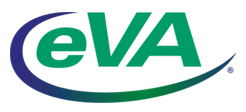Second in a series of articles for the Fredericksburg Regional Chamber of Commerce
By Barbara Fiori
Take another look at the mix of people working in your organization, just as you might see how the ingredients combine for a new recipe.
Have you noticed the wide gaps in age, the changing balance in gender and the varying ethnic backgrounds? We are indeed experiencing the “workplace diversity” that futurists and human resources (HR) specialists have been anticipating for more than a decade.
This is true locally, as well as nationally.
With all of the news recently on immigration, it is a good time to consider how organizations can manage differences among employees and even benefit from a diversity of perspectives.
There are four generations in the workplace today:
-
Matures (born before 1945)
-
Baby-boomers (1946 to 1964)
-
Gen X (born between 1965 and 1980)
-
Gen Y (born after 1980)
Their styles, expectations, use of technology and the ways they approach tasks, as well as their needs for rewards, training and compensation vary widely. This requires serious consideration. Mix the generations poorly and you have created a work environment full of discontent and inefficiency. Mix them well, and different styles complement each other, creating a workplace rich in satisfaction for everyone.
Cultural and gender differences can also generate major problems. At one facility in Canada, I witnessed both cultural and gender issues clash, leading to a worker strike. The organization had a large, male, immigrant East Indian and Pakistani population. A group of the workers went on strike to protest that women were working on the evening shift. Working on evening or night shifts was not respectable for women in their culture. Of course, in Canadian culture, as in our own, it was perfectly acceptable.
Management’s response to the strike was dictated, as it had to be, by local law and culture. In Canada, men and women are treated equally in the workplace, and newcomers have to be prepared to abide by and accept these differing values while they are at work.
Following this incident, there were some months of labor difficulties at the facility, finally resolved through a variety of labor/management and employee/employee communications. All finally came to understand that company decisions had to be based on legal requirements and the continued good health of the business. But the outcome could have been very different had the company failed to understand that it, too, needed to listen to, acknowledge and accommodate (where it could) the very real cultural differences operating in its facility.
This is where a well coordinated public relations (PR) and HR program can be powerful.
In your own organization, consider the potential fall-out from such situations and have a plan for communication with your employees. Communication tactics must be designed for two-way dialog so management and employees can learn from one another. Remember to bring in your PR and HR advisers early, before changes are made, and well before any issues become crises.
A proactive approach will enable your business to make decisions that are best for the whole company, yet are sensitive to the variety of employee tastes and needs.
Your company may also have language differences, as well as natural and deep-seated cultural differences. We all have basic and subtle needs that are expressed in the ways we select food, shelter, water and even the kind of beauty we want in our lives. What looks good, how food should be prepared or presented, what shelter is considered appropriate, what kind of clothing we wear, how our native language shapes our thought processes all vary from culture to culture.
One way that organizations can respond to this diversity is by encouraging a variety of expressions during internal events—multi-cultural luncheons, for example, or articles in the company newsletter about employees from different parts of the world. Another strategy is to create company literature and Intranet sites in multiple languages when appropriate. The wonderful thing about electronic communication is that it is fluid and allows for easy updates and adjustments. But don’t overly depend on it.
One value that spans all cultures is the need for face time, praise and honesty. Things are changing every day and your company’s culture is evolving. The more genuine, frequent and personal the communications—in any language or style—the greater the opportunity you will have to engage your employees and maintain their loyalty.
What employees say about your company will help define your organization’s brand as well as its reputation. What could be more important than that?
Barbara Fiori and Susan Carol, APR, are collaborating on a series of articles for the Chamber. The next and last in this series will be on the revolutionary impact of technology on internal communications and employee relations. For more information about our PR and HR expertise, please call Barbara at +1 540-373-0804 or Susan Carol at +1 540-361-1274.





